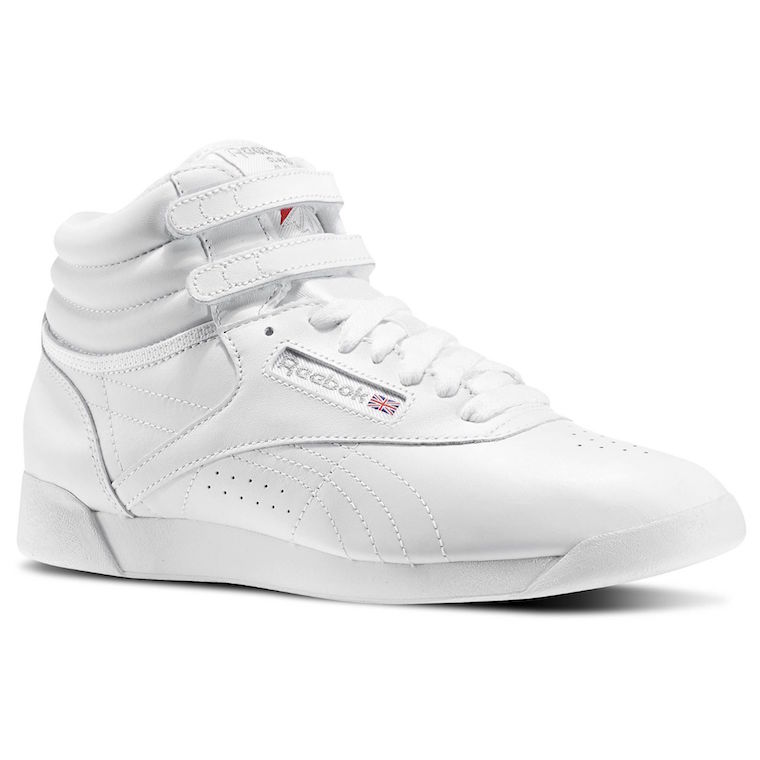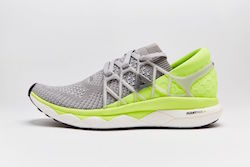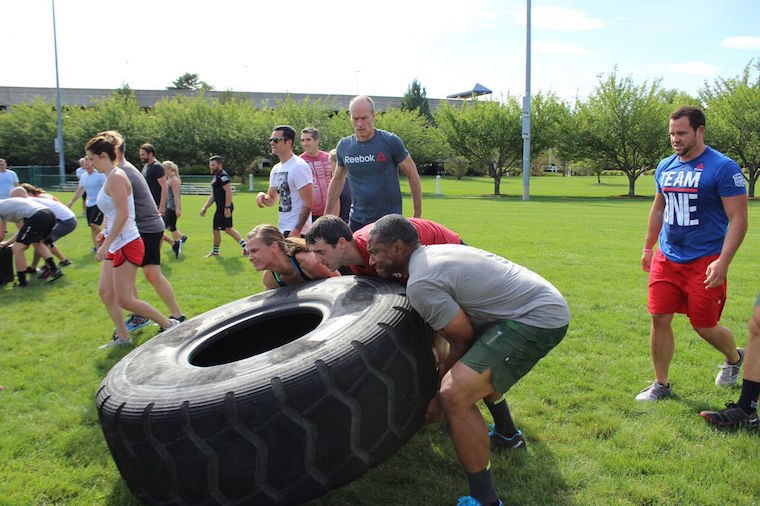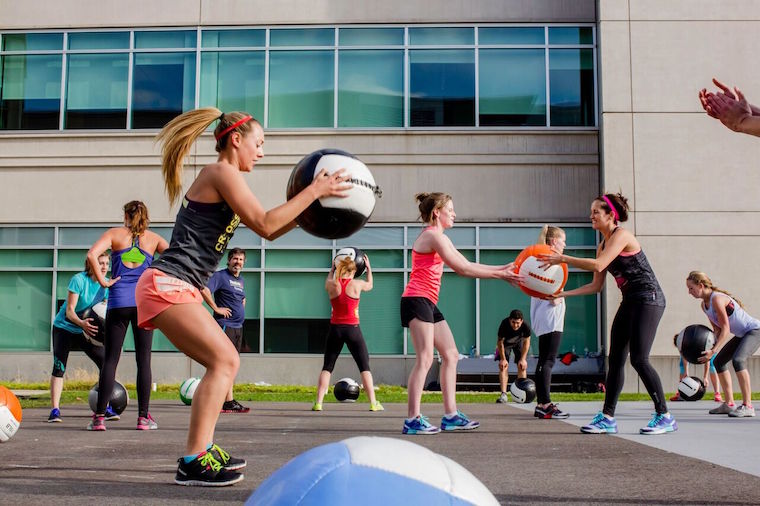Reebok’s President Thinks Taking a Midday Workout Break Is the Most Productive Thing You Can Do
In this week’s Fit For Business, Well+Good’s co-founder and CEO Alexia Brue sits down with Matt O'Toole, president of activewear giant Reebok.
For nearly six decades, Reebok has been continually making waves in the activewear world (two words: the Pump). That's continued under the leadership of current president Matt O’Toole, whose tenure has been defined by bold decisions.
Needless to say, the iconic brand—which was the first to focus on female athletes in the '80s (hello, aerobics)—is most definitely trailblazing again. After (smartly) betting big on CrossFit, Reebok brought on millenial-approved (and workout-obsessed) it-girl Gigi Hadid as the face of their "Perfect Never" campaign this past fall, is collaborating with buzzy Instagram fitness star Emily Skye on a training shoe, and in March is introducing a new sneaker called The Floatride, made with game-changing new foam technology
But perhaps how O'Toole has had the most impact is through his investment in the company culture. The Chicago native gives employees an hour every day to work out—in addition to having a lunch break. And when you walk the Reebok campus (a 44-acre spot just outside of Boston), it’s hard not to notices the incredible camaraderie between colleagues.
Although the scenery will soon be changing—the company is moving into a new headquarters on the Boston waterfront later this year—this ethos will most certainly continue.
Here, O'Toole shares his best career lessons—and reveals some insider intel on what Reebok has in the works for 2017.

What distinguishes Reebok from other players in the activewear market, in terms of the product?
One thing we’re really proud of is that we were in fitness when fitness wasn’t cool in the early 1980s. There was really a big change going on with the introduction of Title IX, which gave women the same rights in terms of college sports participation and ultimately high school sports participation.

{{post.sponsorText}}
Women at that time were saying, "Hey, I can sweat, work out, have muscles. I can really feel more empowered." Reebok was the brand that was right there, the first one to make athletic footwear for fitness with our Freestyle, our Ex-O-Fit, and most of the models that are really popular for us today in our Classics line. It’s our authentic self. It’s who we are. We’re not some of the fast fashion guys posing as people who are in fitness.
A lot of research shows that most people don’t actually wear their sneakers or their leggings to work out in. Do you think the Reebok brand gives permission to people to lounge and live life instead of “being in the game”?
Yes, I think the fact that so many people are wearing fitness [clothes] as part of their lifestyle, whether it’s the sneakers that first started the movement or popular styles today and leggings, is a really good thing because it’s reminding us all of the importance of living a fitness lifestyle. I don’t think it’s going to be a short-lived phenomenon. I think this kind of versatility in the way we dress is going to continue.
"Women at that time were saying, 'Hey, I can sweat, work out, have muscles. I can really feel more empowered.'"
Talk to us a little bit about this particular moment for Reebok: Sales are up and the future looks bright, but there are big expectations from Adidas, your parent company.
We feel like we’re the right brand at the right time. Probably the biggest macro-trend in terms of not just North America, but the world, is an interest in living a healthy and fit life. This is only going to continue to grow. There’s much innovation coming in our pipeline.
Can you give us a sneak peek of some of the innovations?

Yes. I would say the one product that we’re most excited about is a shoe called Floatride that we’re debuting in March at specialty running stores. It’s a product that we’ve been working on for some time. [It has] a unique construction that includes proprietary foam that we created with a company in the UK. We really feel like we’re onto something, in terms of revolutionizing the performance of footwear—both from a cushioning but also from a lateral support point of view.

As a CEO, you’re making big decisions every day. Can you look back and cite a key decision that was a turning point for Reebok?
I'll give you two: One business decision and one cultural decision. From a business point of view, the toughest decision was when we decided to refocus on fitness about five years ago. We had almost €700 million of team sports business. We decided to leave all that behind and replace all that business, and on top of replacing it, grow. We have 60 percent fewer products than we had five years ago, [yet] our business is bigger. This monumental focus on fitness and serving our consumer has really paid off for us.
Culturally, we had a day when we convened everybody who works here, and about a thousand-plus people worked out together on the back lawn. We explained that everyone, on top of their lunch hour, would have another hour every day to work out. [Since then] I think we've had a massive transformation—we all know each other in a different way now, and everyone is feeling a much healthier outlook, in terms of what it does for you to be moving and active.
"This is about us really needing to get back to some more tribal community-based fitness, where we feel like we're not just working our body out, but we're communing.
That really shows how Reebok as a company walks the walk. How did the decision to give employees an extra hour to exercise come about?
We were heavily influenced by a professor at Harvard named John Ratey, MD, who wrote Spark: The Revolutionary New Science of Exercise and the Brain. It's all about the social aspects and the cognitive aspects of actually being physical. Dr. Ratey's research shows that as social dynamics change, we're calmer, we're clearer, we're more focused. It absolutely turned out to be the case. I don't want to say that we did it for some kind of altruistic reason—we're definitely a for-profit enterprise here—[but] I think that the benefits have come back to the company in spades.
You also architected the CrossFit relationship, right?
If you think about in the '80s, Reebok's relevancy really came from group fitness and what was happening in studios for women, particularly aerobics. This is about us really needing to get back to some more tribal community-based fitness, where we feel like we're not just working our body out, but we're communing. For us, CrossFit was the perfect place to start.

Can you share some of your favorite efficiency hacks?
One thing that I've found crazy helpful is starting every meeting asking: “If we have a successful meeting, what are we going to accomplish?” And we write that down. If we really get clear on what we need to accomplish in the next 30 minutes and the decisions we have to make, I find we just crush it.
What early influences shaped you into becoming a business leader?
I grew up in Chicago, not too far from Wrigley Field, with four siblings. My older brother and I were serial entrepreneurs of very small measure. We started with regular stuff like cutting grass and snow blowing. Then we saw this trend where people were doing singing telegrams, so we started this thing called Balloon Brothers—we would deliver balloons in tuxedos to people’s houses. Then we bought a hotdog stand.... We all definitely got a flavor for the entrepreneurial spirit of creating something and satisfying your customer.
"If we really get clear on what we need to accomplish in the next 30 minutes and the decisions we have to make, I find we just crush it."
Is there a piece of advice that you give to people just starting out in their careers?
My experience working in larger companies is that there's a feeling people have when they’re younger, where you want to carry the argument all the time and have your point of view prevail. Now that I'm an old guy [laughs], you realize that's not the important thing. It's much more about having people around you feeling invested, engaged, and owning not only the outcome, but the plan. Sometimes we're just too eager to want it to be our way instead of letting it be what it needs to be for everyone to feel engaged. My experience is that most plans of action can be effective if everybody's on board.
But I'm speaking from a big company point of view. This is different for an entrepreneur. You just want to keep learning, having new experiences, and challenging yourself. It's a lot like how it is for our physical bodies. Our brains—and our own ability to adapt and learn—needs new stimulation.
Welcome to Fit for Business, a column from Well+Good’s co-founder and publisher Alexia Brue, that takes you behind-the-scenes with the most successful healthy-living entrepreneurs around the world, so you can learn what inspires them, what challenges them, and what it’s like to work in the (booming) wellness space.
Other things that big-name entrepreneurs recommend: trusting your intuition and growing at a slow-but-stead pace.
Loading More Posts...